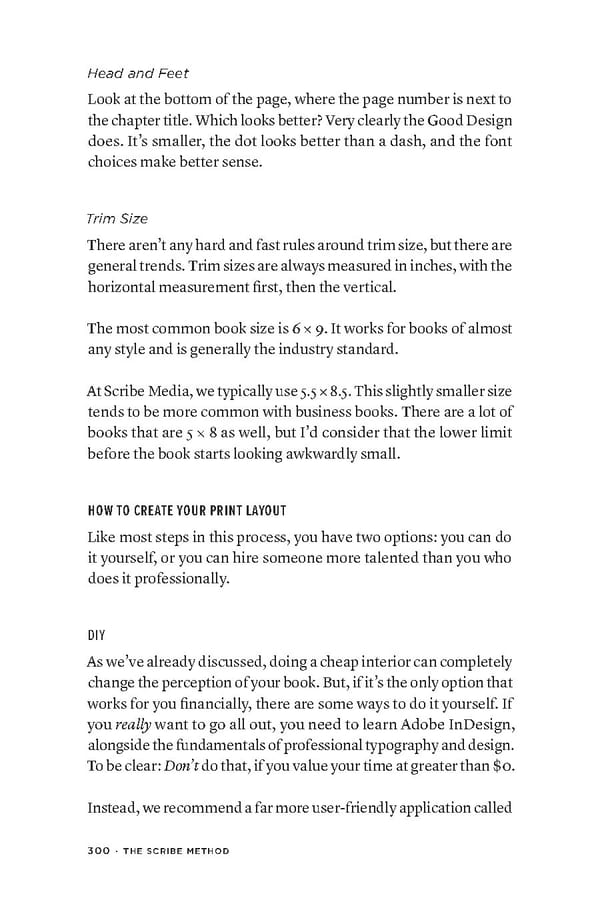Head and Feet Look at the bottom of the page, where the page number is next to the chapter title. Which looks better? Very clearly the Good Design does. It’s smaller, the dot looks better than a dash, and the font choices make better sense. Trim Size There aren’t any hard and fast rules around trim size, but there are general trends. Trim sizes are always measured in inches, with the horizontal measurement first, then the vertical. The most common book size is 6 × 9. It works for books of almost any style and is generally the industry standard. At Scribe Media, we typically use 5.5 × 8.5. This slightly smaller size tends to be more common with business books. There are a lot of books that are 5 × 8 as well, but I’d consider that the lower limit before the book starts looking awkwardly small. HOW TO CREATE YOUR PRINT LAYOUT Like most steps in this process, you have two options: you can do it yourself, or you can hire someone more talented than you who does it professionally. DIY As we’ve already discussed, doing a cheap interior can completely change the perception of your book. But, if it’s the only option that works for you financially, there are some ways to do it yourself. If you really want to go all out, you need to learn Adobe InDesign, alongside the fundamentals of professional typography and design. To be clear: Don’t do that, if you value your time at greater than $0. Instead, we recommend a far more user-friendly application called 300 · ThE SCriBE METhOD
 The Scribe Method by Tucker Max Page 299 Page 301
The Scribe Method by Tucker Max Page 299 Page 301